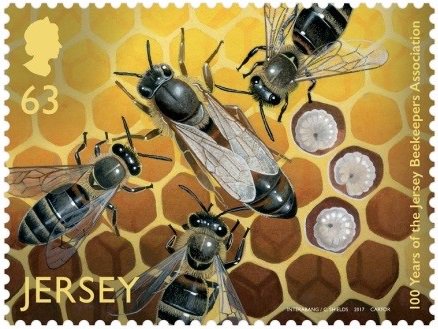Until the beginning of the 20th century, the British Isles were home to the European Dark Honeybee, which we now usually call the Black Bee. Its Latin name is Apis mellifera mellifera, and it was the dominant honeybee here since the last Ice Age, adapting to our changeable and unpredictable climate and thriving in all kinds of weather alongside our native bumblebees and solitary bees.
The Black Bee and her wild cousins were largely responsible for 'farming' our natural landscape, selecting wild flowers that provided them sustenance in the form of nectar and pollen, and in return, rewarding them with all-important pollination services. Therefore, it can be said that she and the other pollinators are largely responsible for the wild flowers you see around you today.
The Black Bee had several qualities that made her particularly suitable for life in Northern Europe: she could fly in wet and cool conditions; she made enough honey to survive the winter, even in poor summers; she was well-attuned to our seasons and knew how to eke out honey stores if the winter turned out to be longer than expected. All-in-all, she was - and is - a hardy bee.
However, she had an Achilles heel, which almost caused her extinction - a fatal susceptibility to viruses carried by an internal parasite that was imported along with Italian bees. The Black Bee was decimated by "Isle of Wight Disease", as it became known.
Nevertheless, her resilience and fortitude ensured that her genes survived and the Black Bee is still with us to this day throughout the country, in the genes of most of our honeybees, but especially in parts Cornwall, Devon, Wales, Yorkshire, the Isle of Man and parts of Scotland. Where breeding programmes have been established, numbers are increasing and we now believe it is time to re-introduce Black Bees more widely into the British countryside, which they helped to create.
Source: The Barefoot Beekeeper, February, 2015
http://biobees.com/blackbees.php

- Login om te reageren
